Common Mechanisms
Flywheel Shooter
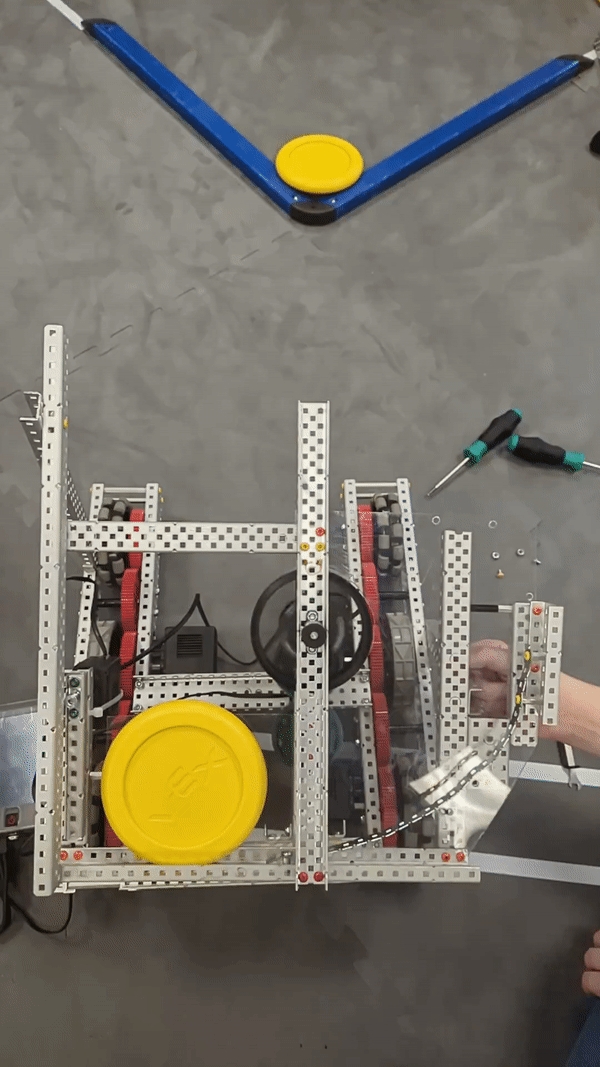
Construction
Two counter-rotating wheels (often with compliant covers) mounted on motor shafts, spaced to pinch a round projectile.
Motors may include encoders for closed-loop speed control.
Use Cases
Rapid-fire launch of small, spherical game pieces (e.g., Power Cells, foam balls).
Advantages
Continuous, high-rate firing-no reload cycle time needed.
Velocity (and thus range) can be tuned on the fly by adjusting wheel speed.
Disadvantages
Only handles round objects reliably-non-spherical items slip or jam. 2
Motor speed (and shot consistency) falls off as battery voltage drops unless actively regulated by encoders. 2
Striker (“Impact”) Shooter

Construction
Rigid striker arm or plate driven by a geared motor or spring, which impacts the projectile to launch it.
Includes a pull-back mechanism (e.g., a torque motor with gear train) to reset the striker.
Use Cases
Launching flat or irregular objects (pucks, square blocks) that cannot be gripped by wheels.
Advantages
Compatible with a wide variety of shapes and sizes. 2
Range adjustable by tuning spring tension or motor torque. 2
Disadvantages
Energy loss to friction when the object slides against a surface reduces distance. 2
High impact loads cause wear on linkages and mounting hardware. 2
Reset mechanism adds cycle time and mechanical complexity. 2
Catapult/Popper Shooter
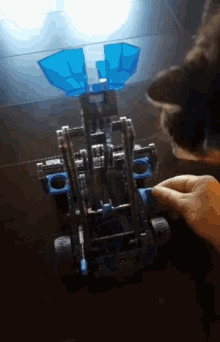
Construction
Elastic element (rubber band or spring) attached to an arm linkage, latched by a servo or pin.
Release mechanism discharges stored energy to fling the projectile.
Use Cases
Single-shot loops at moderate rate for uniform, repeatable distance (e.g., tennis-ball poppers, small foam ring launchers).
Advantages
Very consistent shot energy and accuracy thanks to fixed spring tension. 6
Simple control: prime once, trigger, then re-prime.
Disadvantages
Fixed launch distance unless spring tension is manually adjusted between shots. 6
Mechanical linkage must absorb high forces, leading to potential fatigue and breakage.
Linear Motion Guides
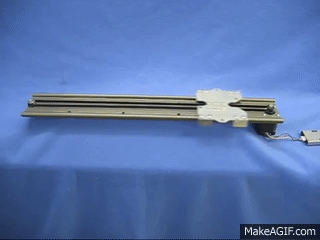

Construction: Aluminum extrusion or steel rail profiles with rolling or plain bearings (linear slides, drawer slides, profile rails). 2 Use Cases
Robot lifts, elevators, extendable arms, precise slide mechanisms Advantages
Recirculating bearings: smooth, low friction under load
Profile rails: tight tolerances, long life Disadvantages
Adds weight and cost
Requires precise alignment and mounting
Arms & Elevators
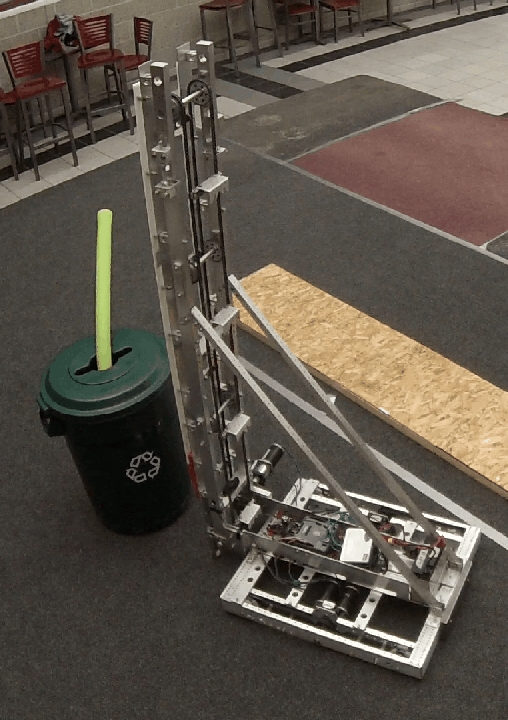

Construction: Pivoting bars or telescoping frames driven by motors, winches, or actuators; may include cascade or continuous-loop rigging. 2 Use Cases
Scoring at various heights, reaching over obstacles
Gripper positioning and manipulator extension Advantages
Pivot arms: simple kinematics, compact stowage
Telescopes: extendable range, rigid at full height Disadvantages
Pivot: limited vertical reach without long links
Telescopes: mechanical complexity, potential binding
Linkages
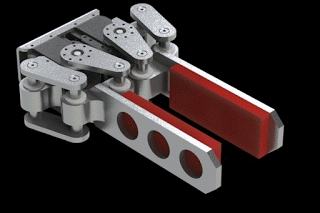


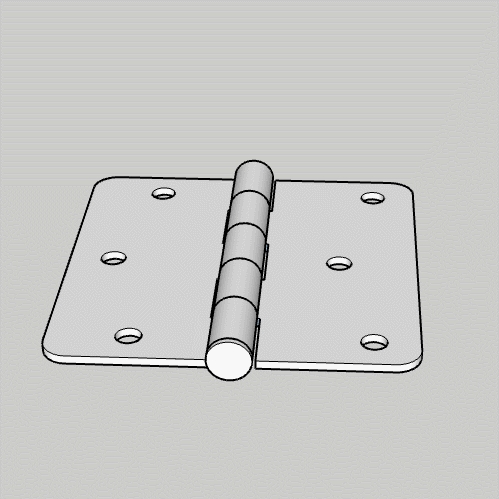
Construction: Rigid links connected by revolute (pin) joints, forming Four-Bar, Parallel (pantograph), Scissor, Corner, or Cross linkages. 2 Use Cases
Converting rotary motor motion into complex planar or vertical motion
Lifts, level platforms, bilateral extension Advantages
Four-Bar: predictable motion path, adjustable leverage
Scissor: large vertical extension in compact footprint
Pantograph: maintain parallel output motion Disadvantages
Multiple joints: cumulative backlash and wear
Scissor: linkage binding without precise fabrication
Passive Intakes & Claws

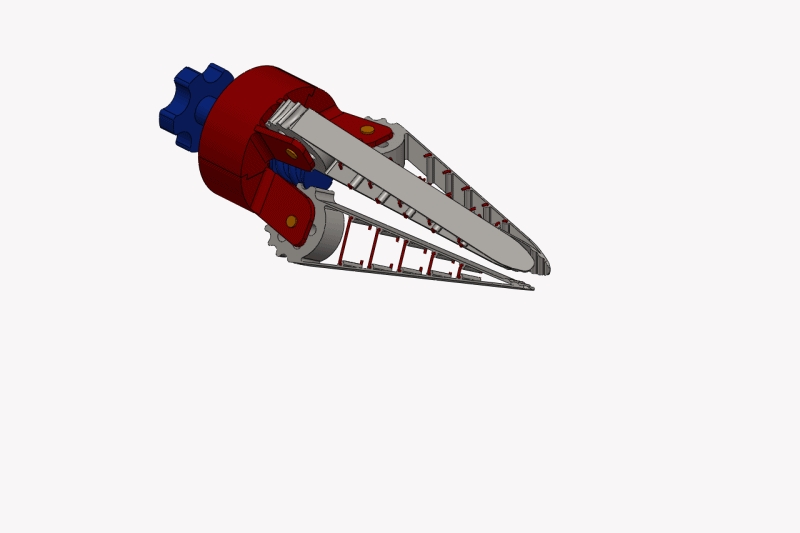
Construction: Fixed mounting plates with compliant materials (rubber bands, foam), passive rollers or fingers. 2 Use Cases
Gripping variable-shape game pieces without active actuation
Centering objects against a backplate for further processing Advantages
Low complexity, minimal actuators required
Gentle on game pieces, self-centering behavior Disadvantages
Limited gripping force, shape dependence
No active release control
Active Intakes


Construction: Powered rollers, wheels, or pneumatic fingers mounted on pivoting arms or frames. 2 Use Cases
High-speed collection of balls, cubes, rings, or custom game pieces
Feeding objects into indexers or shooters Advantages
Controlled grasping and ejection, high throughput
Adjustable speed and torque for different materials Disadvantages
Additional motors or pneumatics add weight and draw current
Complex timing and synchronization with downstream subsystems
Transfers & Indexers
Construction: Belt or roller conveyors, pneumatic gates, channel guides, and staging shelves. 2 Use Cases
Sequencing multiple game pieces, buffering under shooters or scoring mechanisms
Automated stacking or batch delivery Advantages
Precise object positioning, continuous feeding
Scalable to multiple game-piece types Disadvantages
Added length and mass on the robot
Requires control logic to avoid jams
Dead (Idle) Wheels
Construction: Free-spinning omni or traction wheels mounted on bearings, used as load-bearing supports. 2 Use Cases
Reducing friction on non-driving corners
Stabilizing mechanisms or gantry plates Advantages
Simple, passive way to carry loads without consuming motor power
Minimal wear on drive motors Disadvantages
Adds drag if misaligned
Does not contribute to motion
Turrets

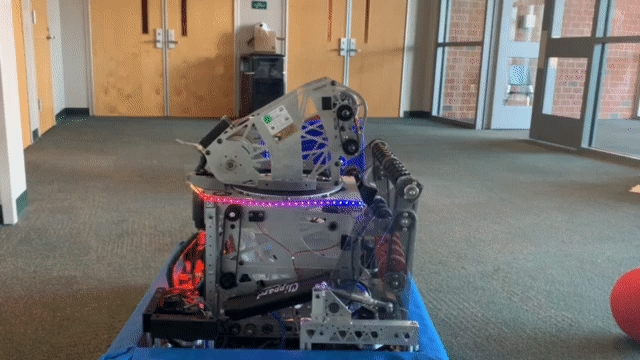
Construction: Rotating subplate on thrust bearings or lazy-Susans, driven by motors or servos. 2 Use Cases
Aiming shooters or sensors independently of chassis orientation
Multi-directional intake or scoring without turning the robot Advantages
Decouples turret and chassis control, rapid targeting
Enables continuous rotation and precise angular positioning Disadvantages
Complex wiring management (slip rings or cable chains)
Increased mass and higher center of gravity
Forklift Mechanisms



Above shown Screw and Belt Driven Linear Guides can also be used
Construction
A rigid rectangular frame built from metal tubing or plates supports four drive motors with reduction gearing and a single H-bridge controller for traction and steering6.
A vertical lift assembly uses profile rails or linear slide tracks on each side to guide motion, with a rack-and-pinion driven by a DC motor to raise and lower forks or a carriage2.
Ultrasonic distance sensors mounted near the base detect shelf or object positions and trigger lift actions, all wired through a microcontroller (e.g., Arduino Uno) and soldered onto a breadboard for flexible I/O expansion2.
Use Cases
Warehouse and warehouse-style competition challenges requiring precise fork positioning under pallets or blocks.
Educational projects demonstrating pick-and-place automation, obstacle avoidance, and sensor integration.
Advantages
High load capacity and stable vertical motion when properly counterbalanced.
Precise height control via gear reduction and encoder feedback.
Modular design allows easy adjustment of fork width and lift height.
Disadvantages
Heavy lift assemblies can unbalance the drive base, requiring careful weight distribution or repositioning of components2.
Increased mechanical complexity and part count raise build time and maintenance.
Rack-and-pinion systems can bind if rails are misaligned or not lubricated.
Robotic Grippers
Mechanical Grippers

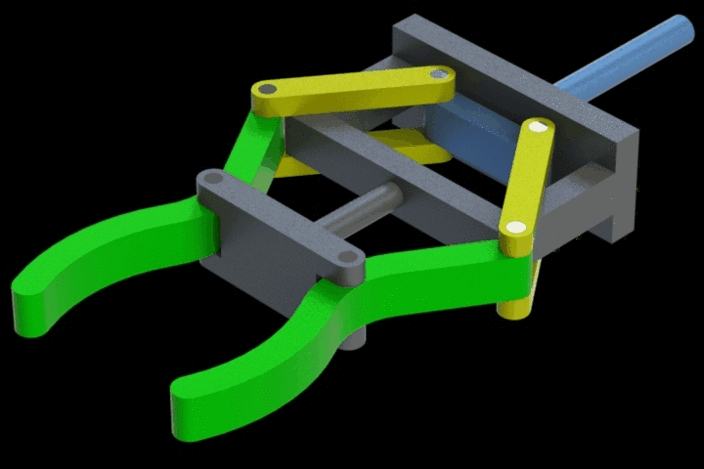
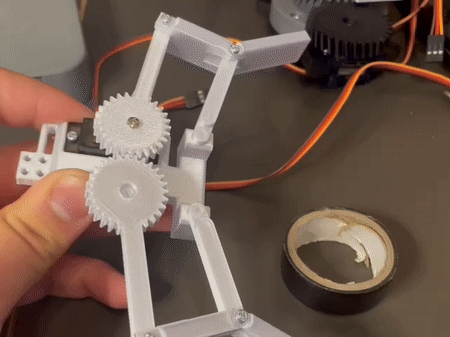
Construction: Two or more rigid fingers actuated by servos, motors, or linkages; often include compliant pads for better friction3.
Use Cases: General-purpose part handling, from small rigid game pieces to irregular objects in warehouses.
Advantages: High grip force, adaptability to varied geometries, straightforward control.
Disadvantages: Complex designs for large workpieces, increased weight, limited softness for fragile items3.
Vacuum Grippers
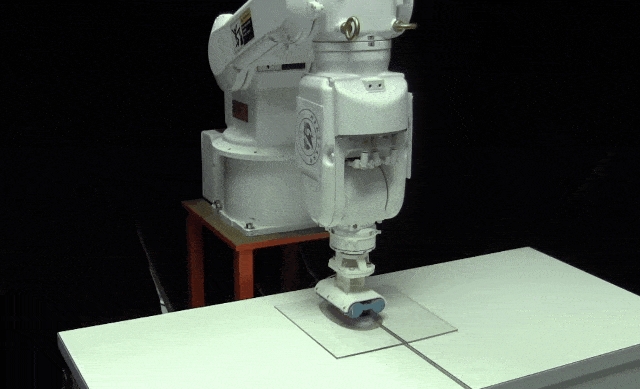
Construction: Suction cups linked to a vacuum pump or venturi generator, often with integrated pressure sensors4.
Use Cases: Handling flat, smooth panels, sheet goods, glass, and light game elements.
Advantages: Simple design, fast pick-and-place cycles, low profile for tight spaces.
Disadvantages: Only works on non-porous surfaces; rubber cups wear and require frequent replacement3.
Magnetic Grippers
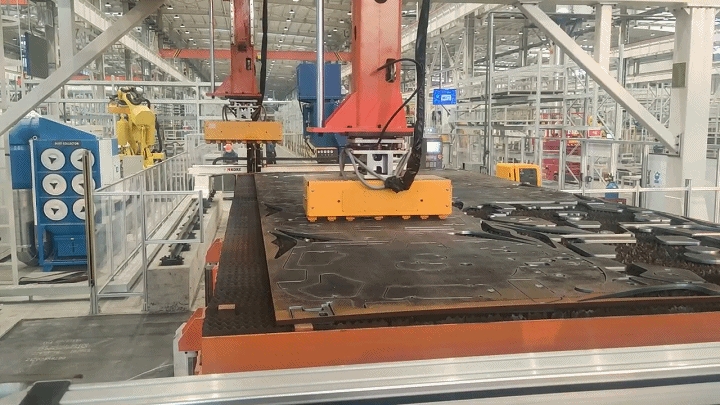
Use Cases: Lifting ferrous parts, sheet metal handling, assembly tasks with metallic game pieces.
Pneumatic Grippers
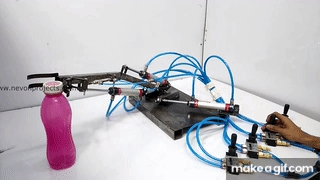
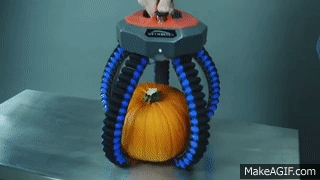
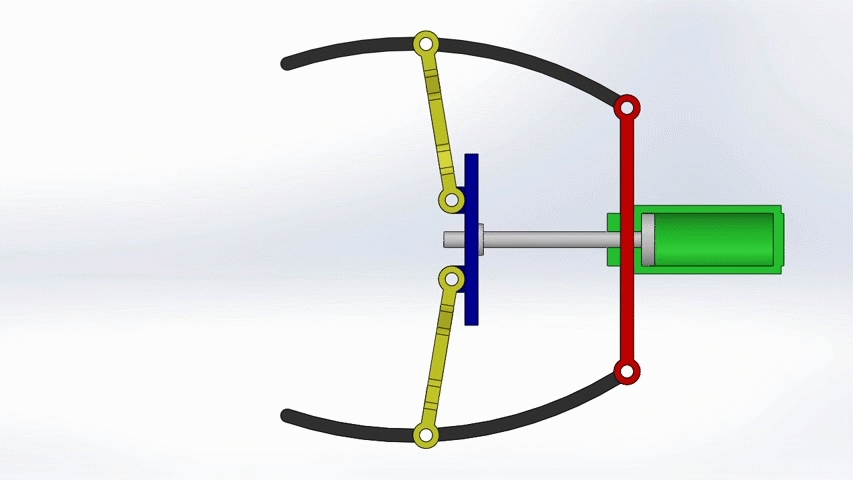

Construction: Parallel or angular jaw fingers driven by air cylinders, with flow control valves for speed and force tuning4.
Use Cases: High-speed pick-and-place, automated packaging, fluid-tight sealing in assembly.
Advantages: High force-to-weight ratio, fast actuation, built-in compliance.
Disadvantages: Requires compressed air infrastructure, noisy operation, potential air leaks.
Servo-Electric Grippers



Construction: Brushless or stepper motors with gearboxes driving finger linkages, often with integrated position and force sensors4.
Use Cases: Precision handling in electronics assembly, variable-force tasks in competition robots.
Advantages: Precise position and force control, easy integration with digital controllers, low maintenance.
Disadvantages: Higher cost, more complex control algorithms, potential heat generation in continuous use.
Last updated